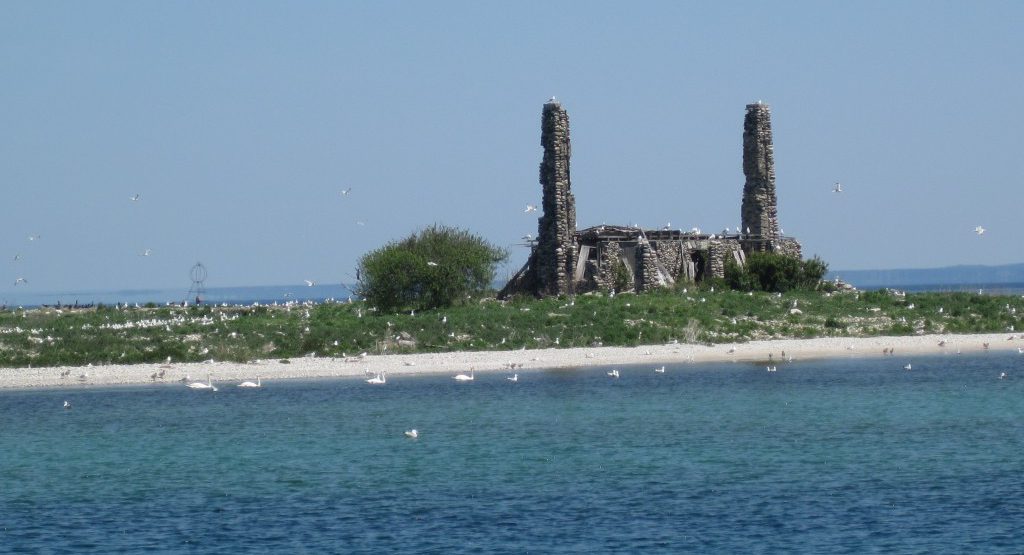From our 2004 Summer Newsletter
At the Leelanau Conservancy we try to promote wildlife viewing at our Natural Areas and on our hikes and events, but wildlife can function as more than just a means to enjoy the outdoors. Wildlife can serve as a “first alert” tool to detect changes in the environment and potential for adverse health effects from environmental contamination.
The Michigan Dept. of Environmental Quality (MDEQ) has implemented a water quality-monitoring program and two wildlife species are helping the research effort. Bald eagle blood testing is one part of the program and collecting and analyzing herring gull eggs is the other. The bald eagle project began in 1999. Herring gull egg analysis followed in 2002. Both are in collaboration with scientists from Clemson Univ.
The MDEQ relies on partners throughout the state to help collect gull eggs. One sampling point is Gull Island, a Conservancy-owned property just off shore from Northport. Historically, biologists from Sleeping Bear Dunes National Lakeshore (SBDNL) have collected the eggs on Gull Island. This year they asked for our help, knowing that Natasha Lapinski, our Land Protection and Development Coordinator, is a biologist with an emphasis in ornithology.
In early May, Natasha and two staff from SBDNL sped over in a boat courtesy of Northport Bay Boatyard. There, they counted and recorded egg activity in 100 nests, measured 17 eggs and collected 13 to be sent off to Lansing for analysis. There, MDEQ biologists will test the eggs for contaminants like mercury, PCBs and chlorinated pesticides.
Many such contaminants occur in the Great Lakes ecosystems at unsafe concentrations to humans, but may not be quantifiable in water using cost- or time- effective techniques. Concentrations of these types of contaminants in wildlife tissues may be measured and assessed more easily. Because fish-eating wildlife and people share a common aquatic food web as well as similar complex physiologies, wildlife can help scientists assess the risks to humans.
We’re happy to help the State in achieving its water quality goals. This project reflects the goals of our own Watershed Council, and we hope to incorporate it into the Council’s programming for 2005 and years to come.




